Espoo Museum of Modern Art
Mobile Guide to the Ehibition Dialogues
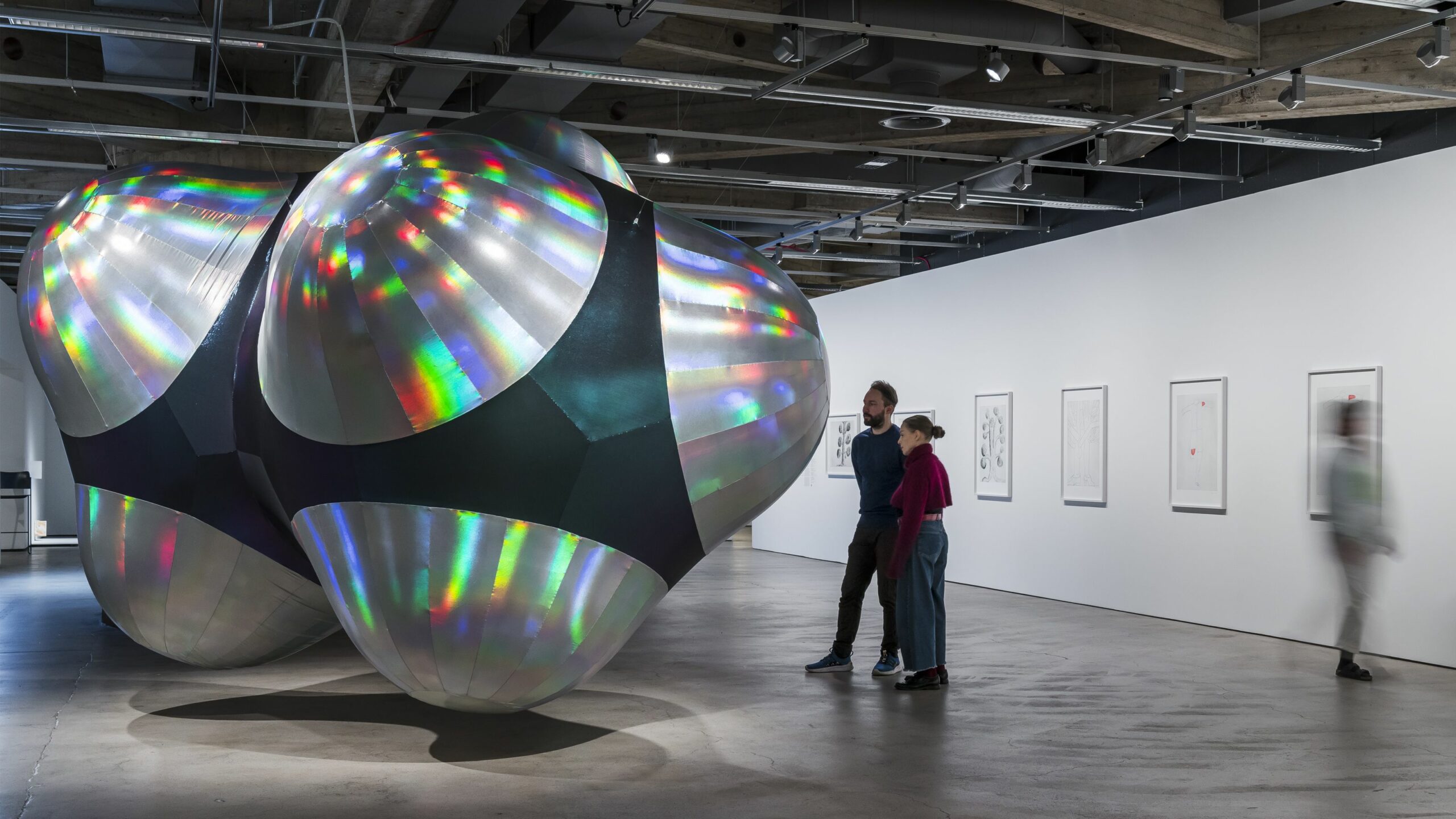
The exhibition features works from the Saastamoinen Foundation art collection that engage in free dialogue with one another, encouraging visitors to compare and draw parallels between them. The exhibition is an invitation to engage in dialogue or conversation, that will hopefully foster myriad interpretations. This mobile guide introduces you to some of the artists in the Dialogues exhibition.
Al Qadiri, Monira
BENZENE FLOAT (Propane)
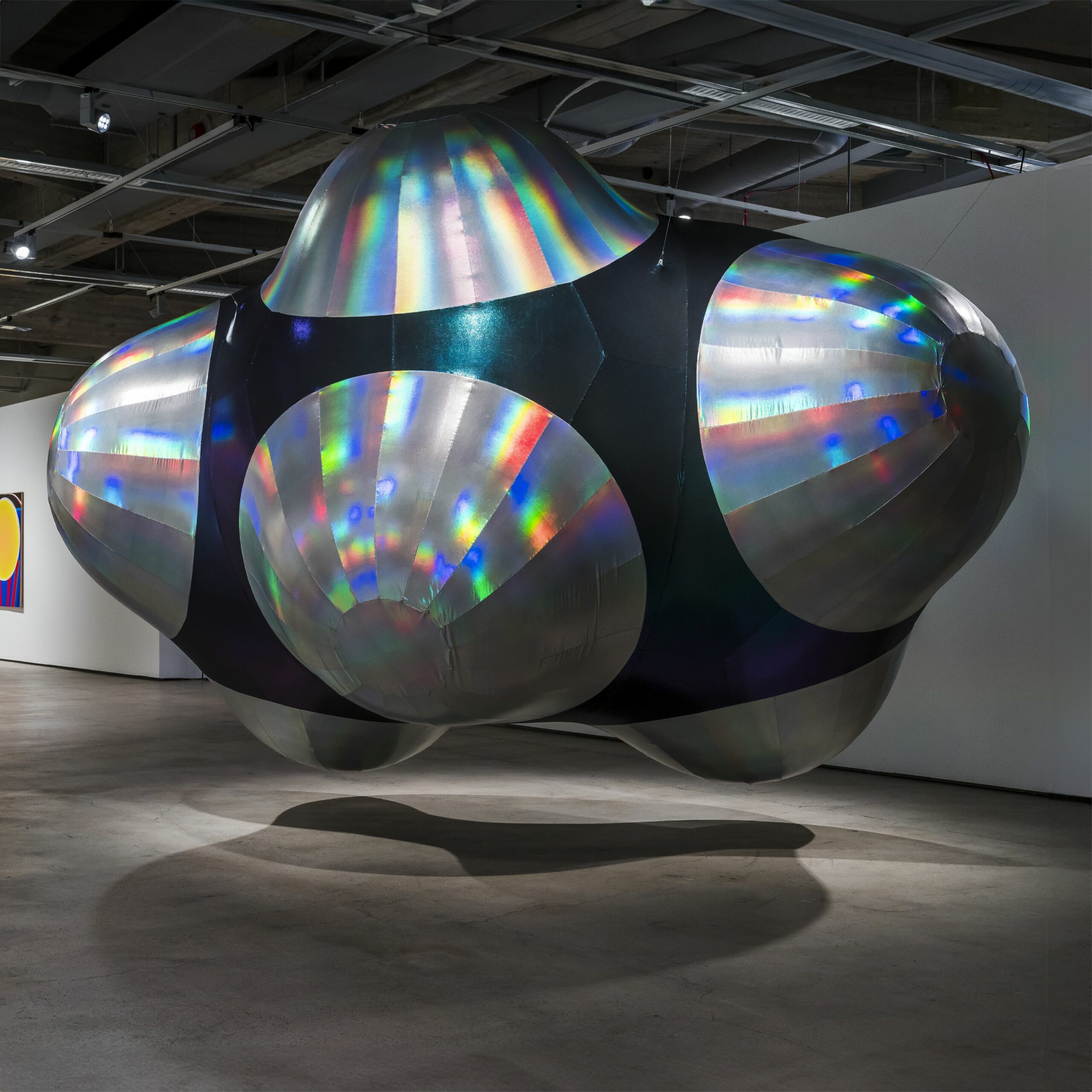
The molecular structure of propane is inflated to gigantic proportions in this inflatable sculpture BENZENE FLOAT (Propane) (2023) measuring over four metres in length. Propane is a gas obtained by distilling crude oil. It is used in various household products and industrial processes. The sculpture is from the BENZENE FLOAT series, Monira Al Qadiri’s (b. 1983) critical inquiry into the oil industry. Fuels, asphalt, plastics and other petrochemicals are invisibly integrated into our everyday lives. Our modern lifestyle is fuelled by oil, but oil is also a key cause of the climate crisis.
Araeen, Rasheed
Chaar Pellay
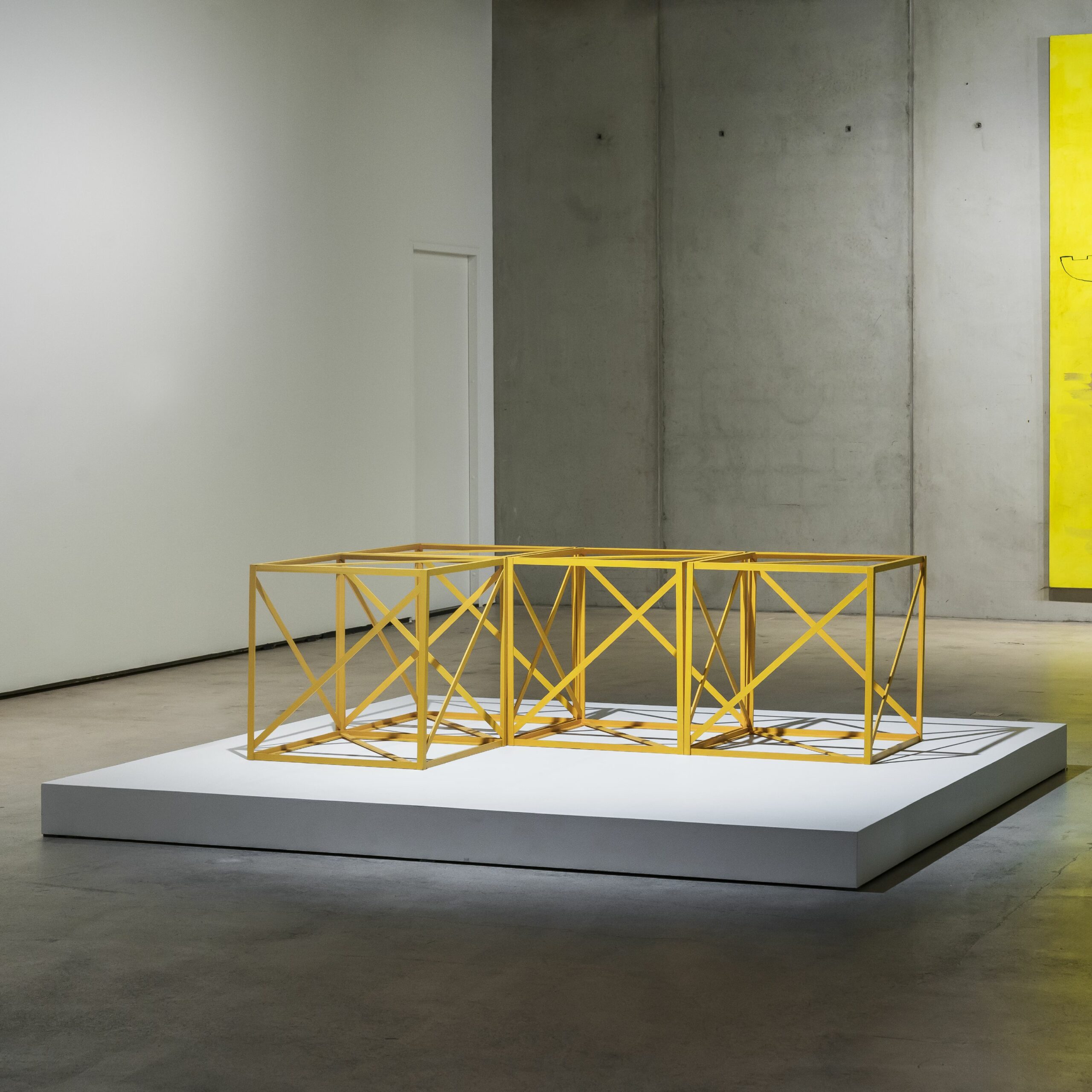
Chaar Pellay (1968–2017) consists of parts, which the museum personnel assembles into different compositions during the exhibition. Rasheed Araeen (b. 1935) has a previous education in engineering and calls his works structures rather than sculptures. Araeen is originally from Pakistan and moved to Great Britain in the 1960s. During his career, he has founded the Black Phoenix magazine (1978) and Third Text publication series (1987) to promote artists from outside Europe.
Asawa, Ruth
Paul
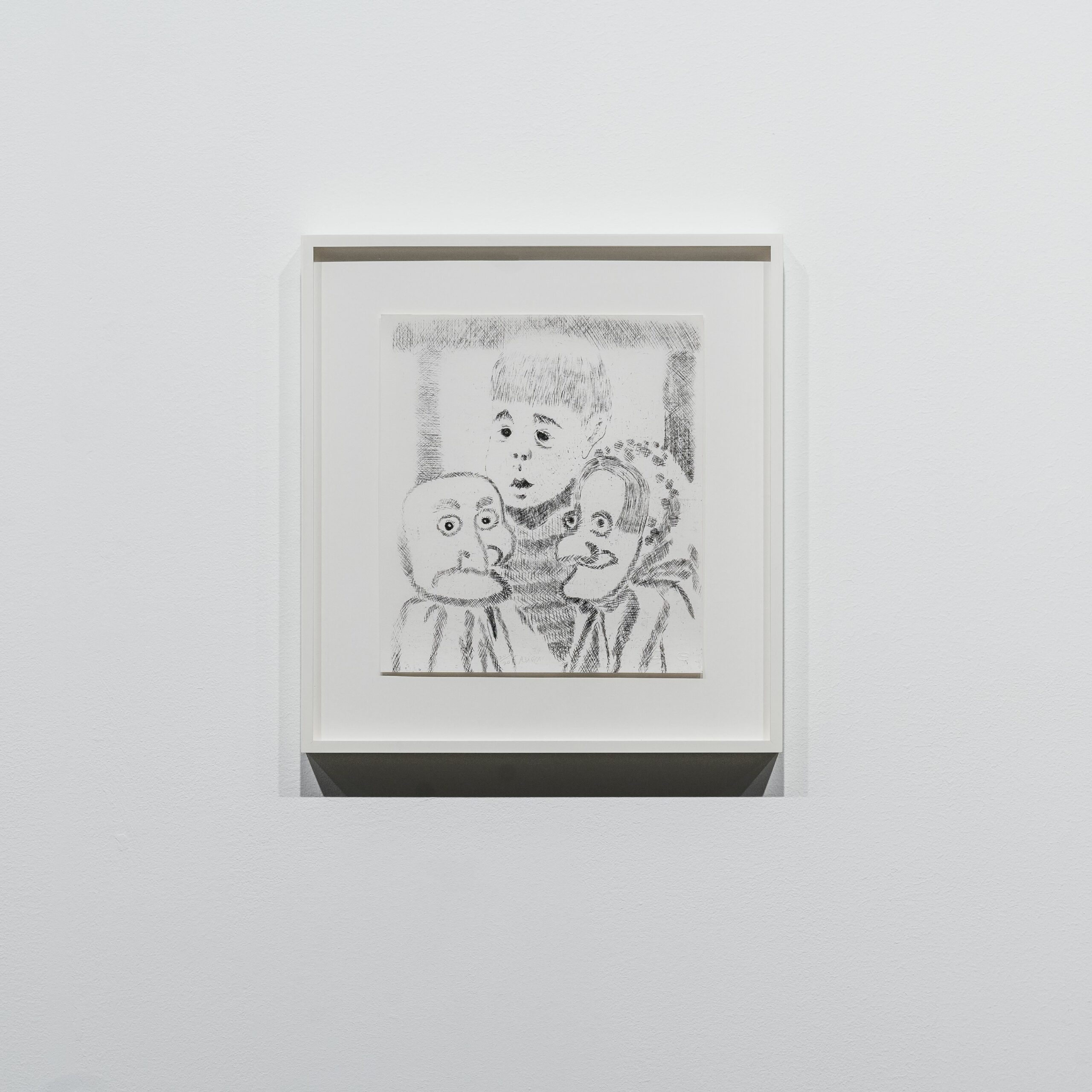
Ruth Asawa (1926–2013) initially achieved acclaim for her distinctive sculptures looped woven from metal wire. She branched out into lithography in 1965 after receiving a fellowship at joining the Tamarind Lithography Workshop founded in Los Angeles by June Wayne. Her time at Tamarind marked her longest ever separation from her family. Family members appear in many of her lithographs, but the artist’s primary focus is not so much portraiture as the study of line, texture and the printmaking process. Paul (1965) depicts Asawa’s youngest child flanked by two doll-like figures.
Bourgeois, Louise
Topiary: The Art of Improving Nature

Louise Bourgeois´s (1911–2010) art deals with deeply personal themes. In the print portfolio Topiary: The Art of Improving Nature (1988), she pairs depictions of body parts, crutches, and amputees with imagery from the natural world, a lifelong preoccupation. Topiary is the horticultural practice of shaping plants into ornamental forms by clipping and limiting their natural growth. The seemingly violent human interventions ultimately make the tree stronger, a concept Bourgeois connected to the many hardships she suffered and survived. Bourgeois worked in the mediums of painting, sculpture, installation and graphic art. She took up printmaking in the late 1940s, when she frequented the renowned Atelier 17 printshop in New York and worked on a small printing press at home. In the late 1980s, she returned to the medium in earnest, and created several print portfolios, books, and editions until the end of her life.
Griffa, Giorgio
Obliquo policromo
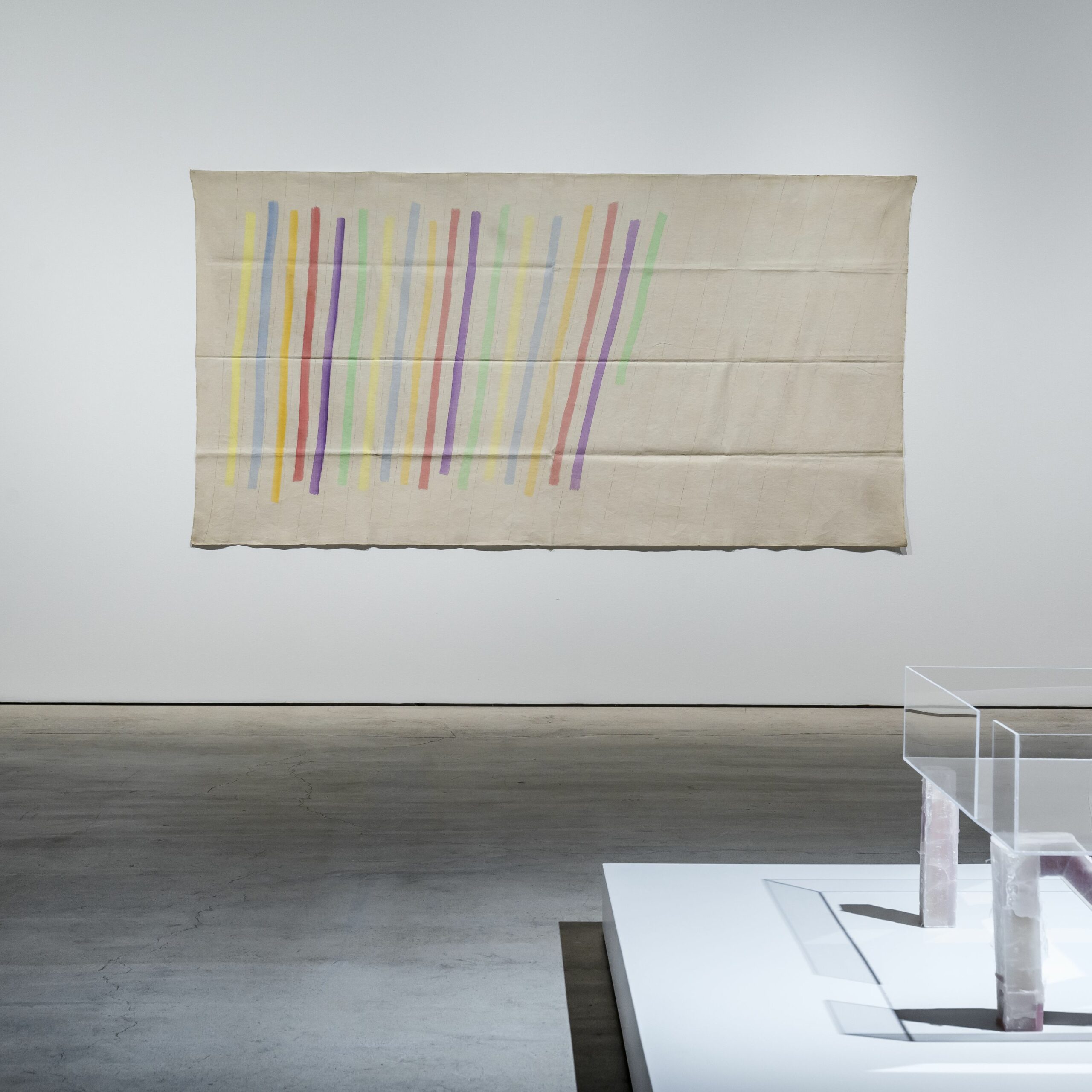
Obliquo policromo (Polychrome Diagonal) (1970) has been created on unprimed and unstretched canvas, characteristically of the artist. It hangs freely on the wall with the help of nails. When the work is not displayed, it is folded and stored, and during storage, the folds in the canvas become part of the work.
Giorgio Griffa (b. 1936) is interested in the materiality and simplicity of paintings. For him, shapes and colours matter more than what the painting depicts. This is illustrated by his statement from 1972: “I don’t represent anything, I paint.”
Halaby, Samia
Foldgrow 6
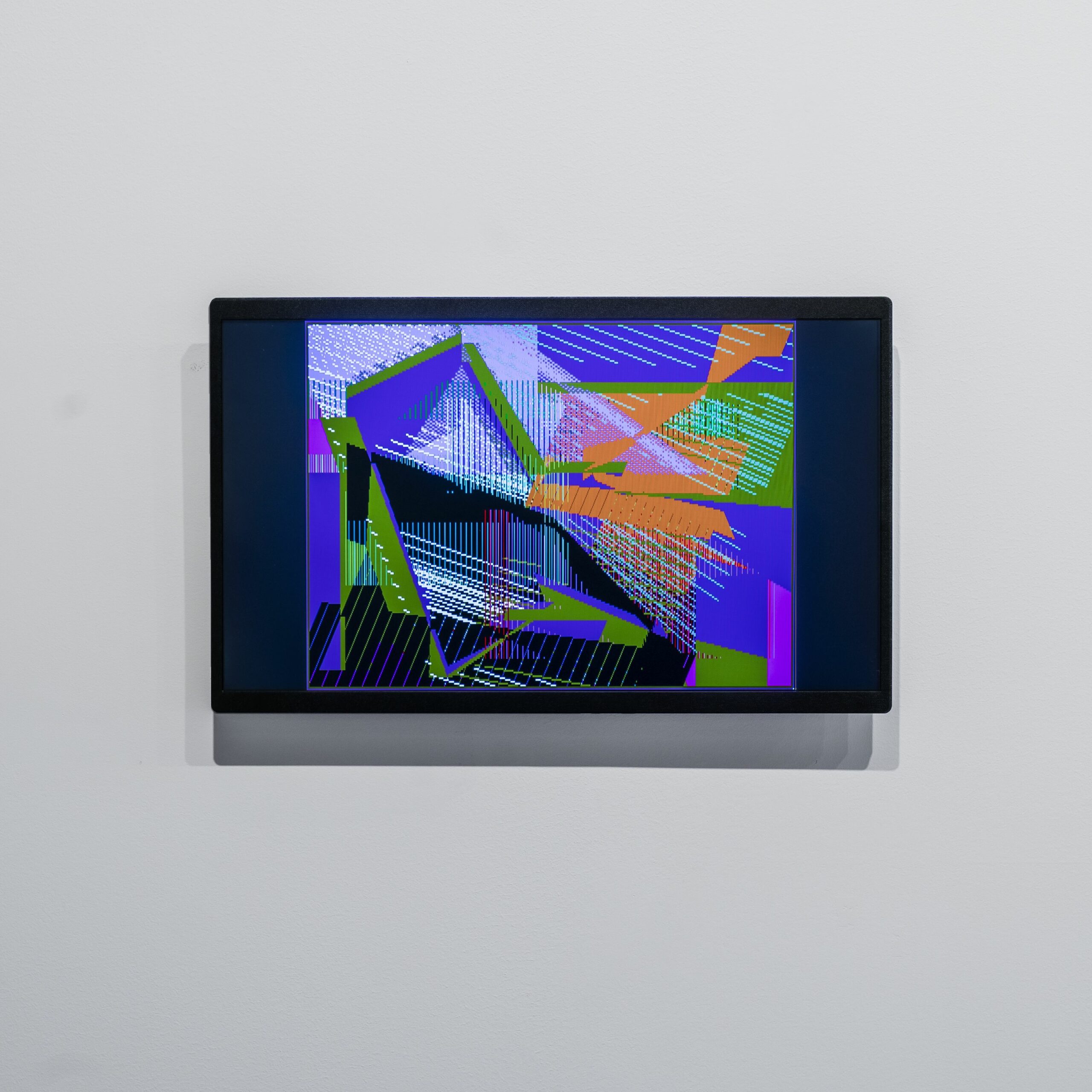
Samia Halaby (b. 1936) is an abstract painter. Through colours and shapes, she has been studying natural phenomena such as growth and change since the 1960s. In Foldgrow 6 (1987), the familiar elements of her oil paintings appear in motion. The digital work is part of a wider series programmed by the artist on an Amiga computer. Though not widely shown in the 1980s, Halaby is now recognized as a pioneer of Computer art.
Palestinian-born Halaby remains active on the art scene to this day, and she is also a political activist and scholar. She has been based in the United States since 1951 after fleeing Jerusalem with her family aged eleven in 1948.
Henrot, Camille
Bad Dad & Beyond
The toy-like telephone bombards us with strange questions, posing further questions in itself: Who is the person at on the other end of the line, and what is the point of his peculiar line of inquiry? The viewer responds by pressing keys, and the pre-recorded script grows progressively more bizarre. Camille Henrot´s (b. 1978) work Bad Dad & Beyond (2015) deals with language and those who abuse it to dominate others.
You can touch the telephone. The recording is in English.
Korman, Harriet
Untitled
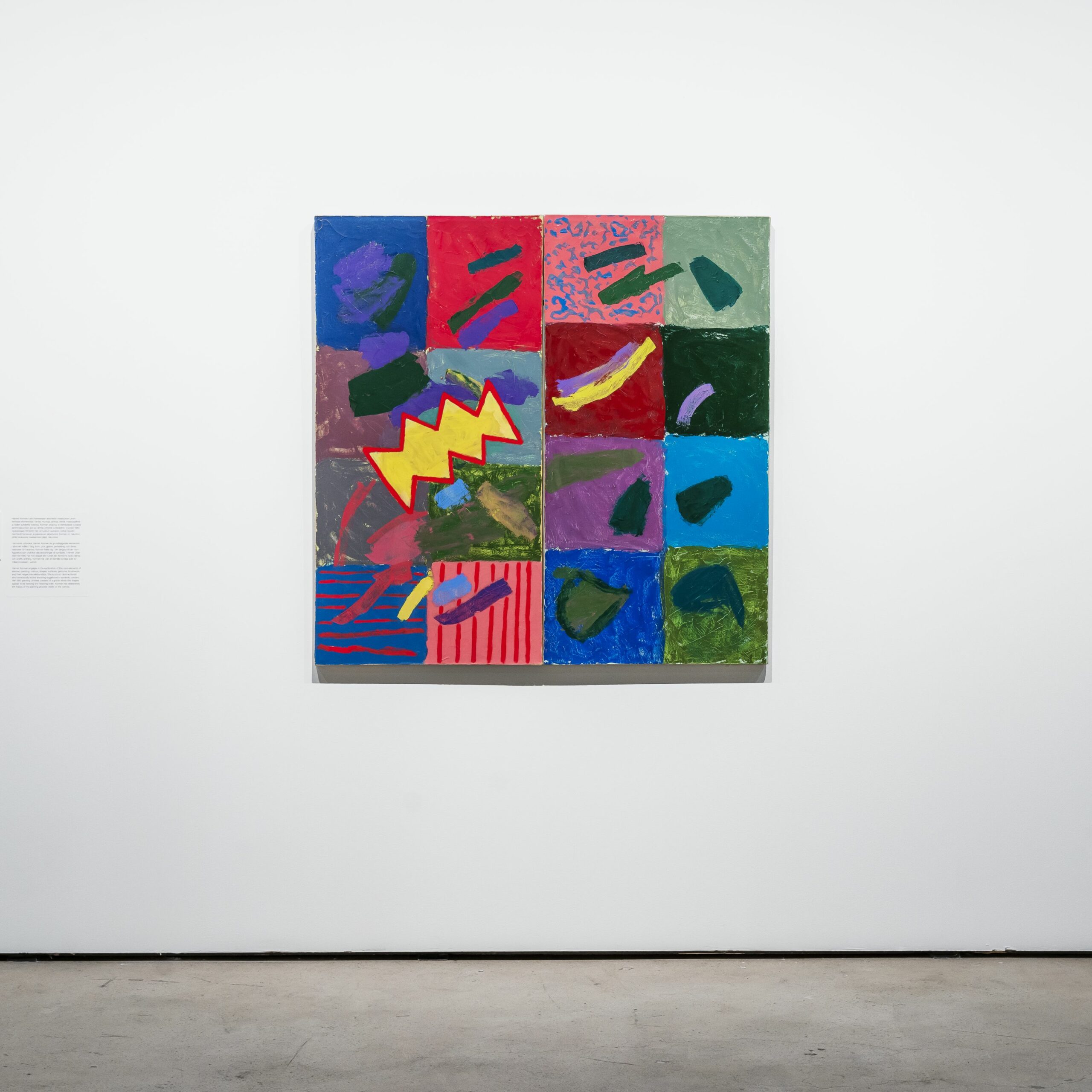
Harriet Korman (b. 1947) engages in the exploration of the basic elements of abstract painting: colours, shapes, surfaces, gestures, brushwork, and their respective relationships. She is a strict abstractionist who consciously avoids anything suggestive of symbolic content. Her 1984 painting Untitled consists of a grid in which the shapes appear to be dancing and resisting order. Korman has deliberately left traces of the painting process visible on the canvas.
Lozano, Lee
No title
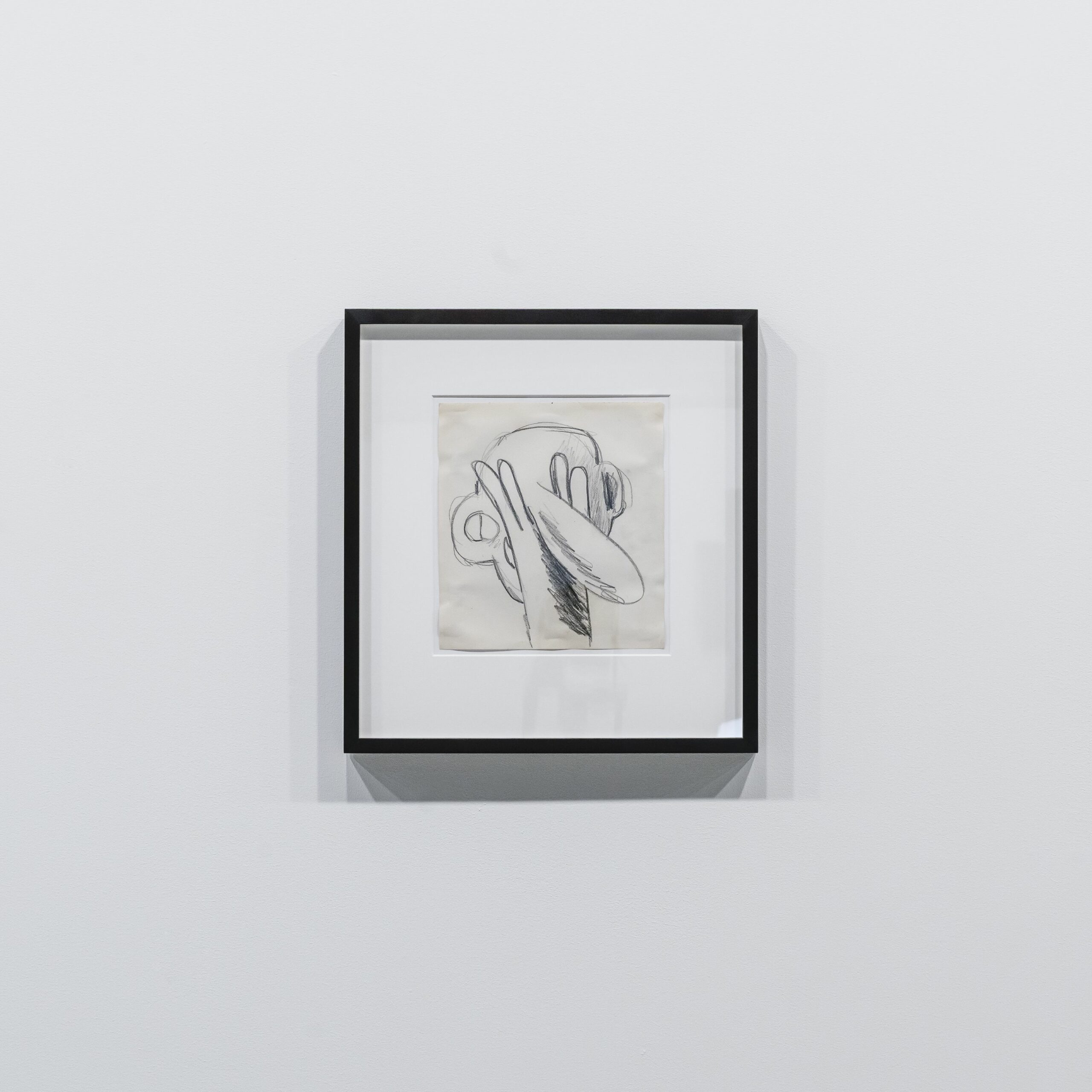
The work is part of Lee Lozano’s (1930-1999) early production. Lozano was active in the New York art scene in the 1960s. In her paintings and cartoonishly sarcastic drawings, she explored the relationship humans have with power, gender and sexuality. The phallic nose in No title (1962) is one of the recurring motifs of her works.
Lozano’s critical attitude towards the sexist power structures in society culminated in 1972 when she moved away from New York and severed all ties to the art world.
Mujinga, Sandra
Disruptive Pattern

The three-channel video titled Disruptive Pattern (2018) refers to patterns that make it difficult to detect the object. These include, for example, zebra stripes and the camouflage patterns of the army.The dancer on the screen is improvising, meaning that the movements have not been determined in advance but are formed during the dance. Sandra Mujinga (b. 1989) is a Norwegian multidisciplinary artist who approaches themes of visibility, disappearance and identity in her works. This work has been produced in collaboration with dancer Amie Mbye.
Ołowska, Paulina
Disco Ofelia and Eleuter House (after Jarosław Iwaszkiewicz)
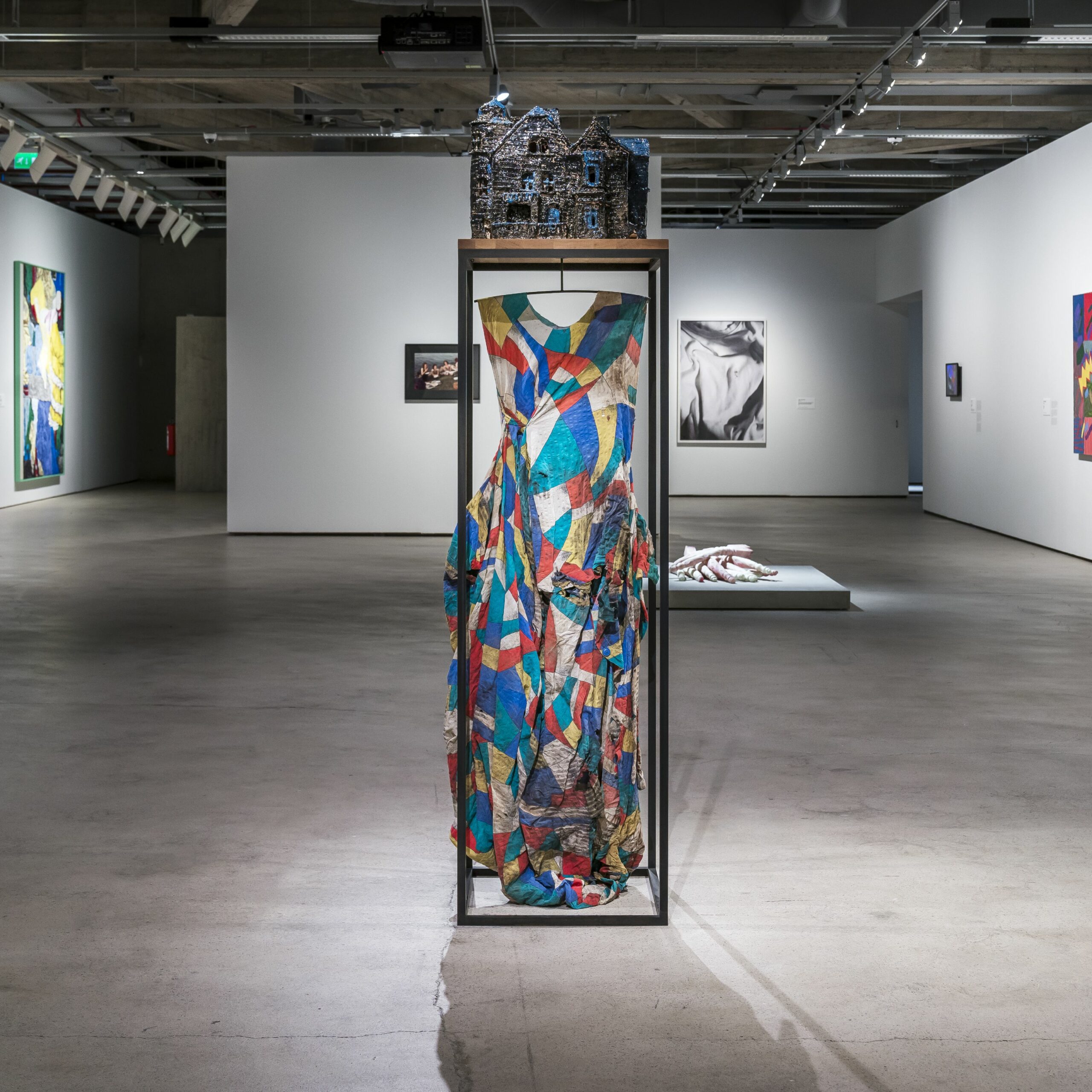
Disco Ofelia and Eleuter House (after Jarosław Iwaszkiewicz) (2019) is from a series of sculptures created in collaboration with fashion designer Michał Wiśniewski, whose garments were first buried, then unearthed, and finally shaped into sculptures. Paulina Ołowska (b. 1976) seeks to shake up the conventional ways in which women are represented in art. She sums up her thoughts by asking: “Once you have grown into womanhood, how do you defend or preserve your freedom to be the woman you want to be?” The theme was inspired by Simone de Beauvoir’s 1967 book La femme rompue (The Woman Destroyed), which reflects on women’s lives, ageing and societal expectations through the stories of three women.
Singh, Dayanita
Mona and Myself

Dayanita Singh (b. 1961) is an artist primarily working in photography based in Delhi, India. Mona and Myself (2019) is what Singh calls a ‘moving still image’ of the artist’s lifelong friend Mona Ahmed, who passed away in 2017 and appears in hundreds of Singh’s photographs. Singh says that her relationship with Mona Ahmed is captured poignantly in this video, which came about by chance during a photo shoot. Unlike photographs, the video conveys their bond also through music and the sound of their breathing. Singh has published fourteen photobooks, one of which is an intimate portrait of Mona Ahmed’s extraordinary life living in New Delhi in the 1990s.
Sun Kim, Christine
Three Tables II (HPA, DTS, AGB)
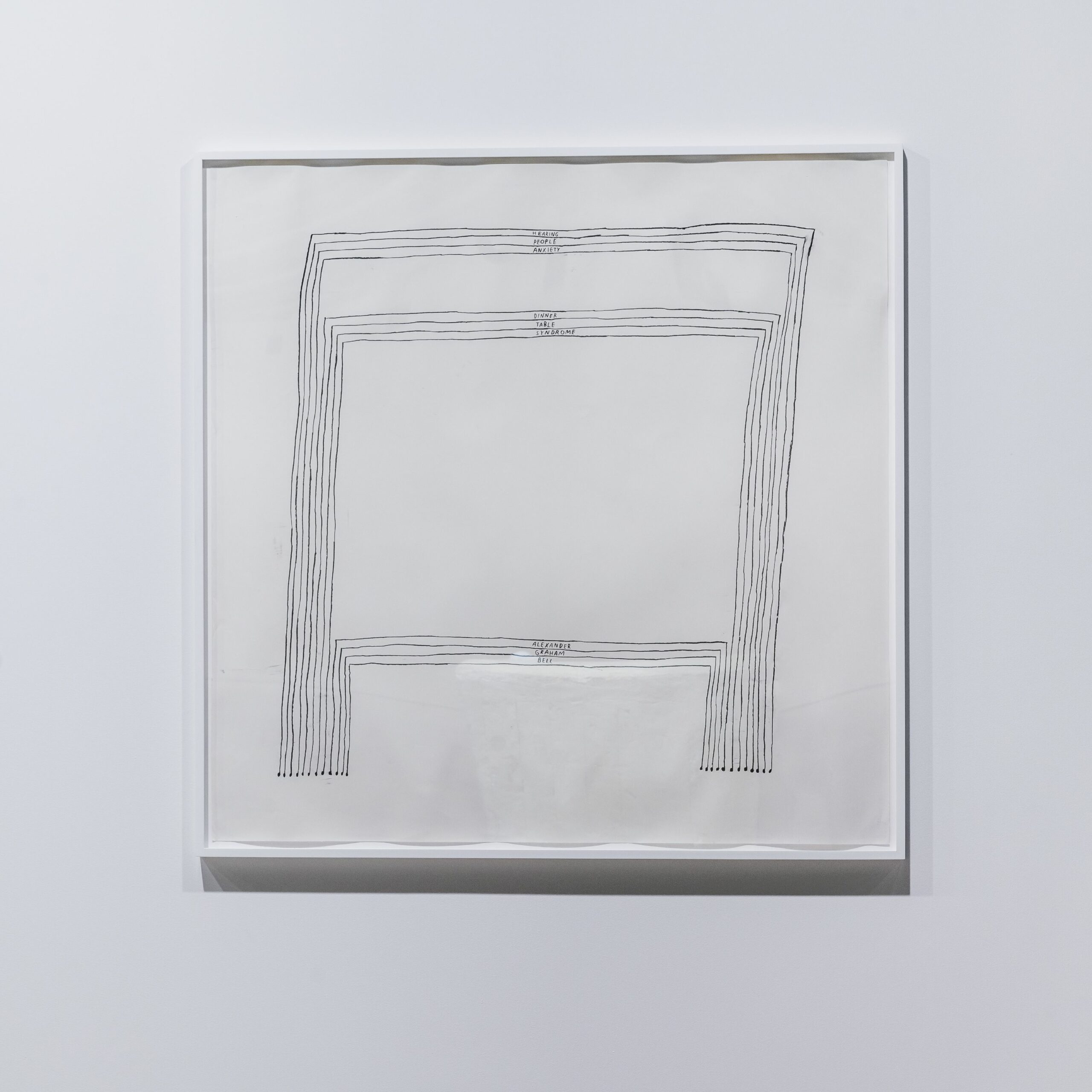
In her art, Christine Sun Kim (b. 1980) explores how sound operates in society and addresses the social status of Deaf people and those using sign language. Three Tables II (HPA, DTS, AGB) (2020) highlights three phenomena of exclusion that are well known among the Deaf culture. These phenomena are referred to as words that have been stacked on top of each other like notes on a stave. Hearing People Anxiety refers to the cultural tensions between the deaf and the hearing. Dinner Table Syndrome refers to the experience of the deaf being shut out of social situations dominated by hearing people. The third group of words refers to inventor Alexander Graham Bell (1847–1922), who resisted marriages between deaf people and the teaching of sign language to deaf children. This happened at a time when destructive thoughts of racial doctrine began to spread in Western countries.
Syms, Martine
The Fool
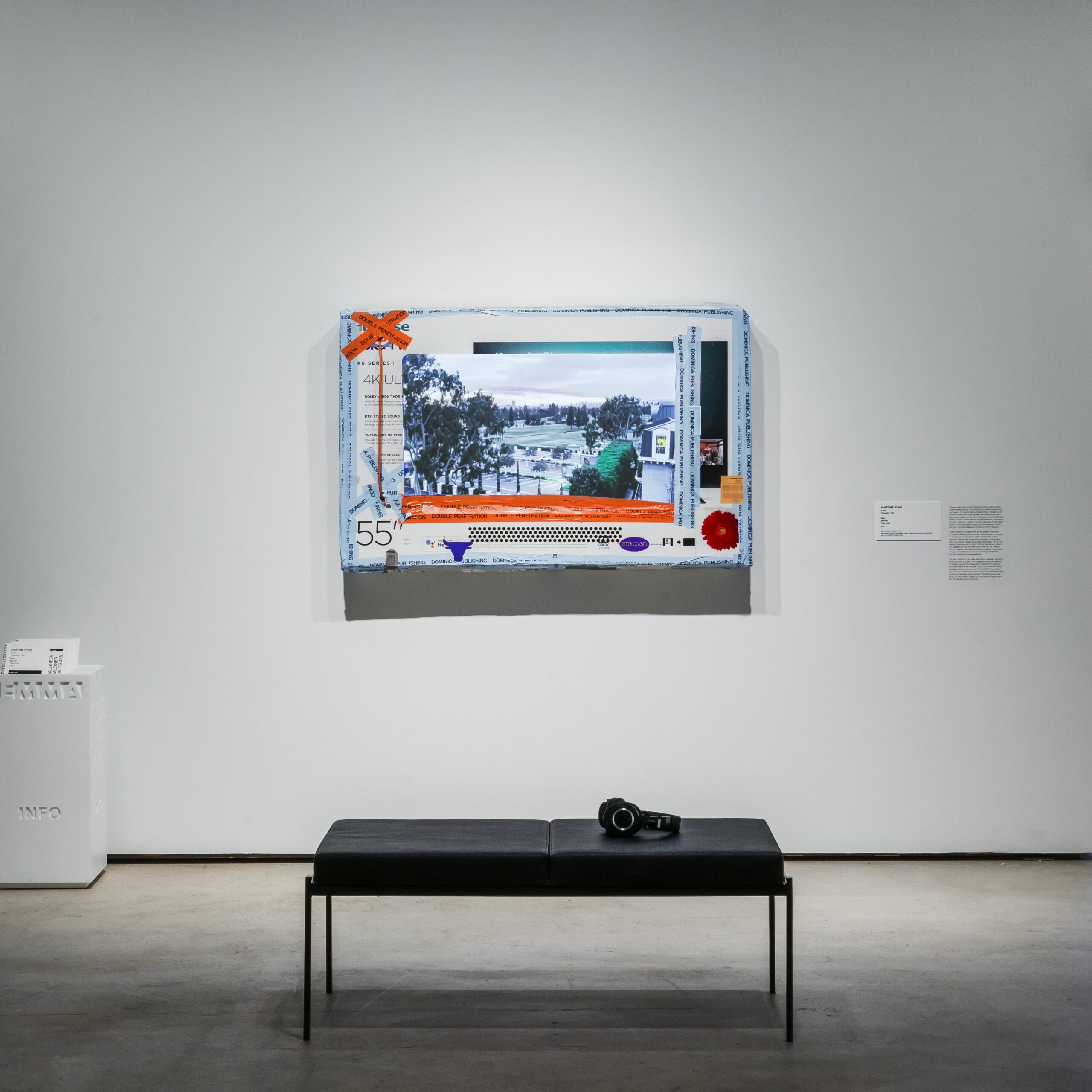
In the video work The Fool (2021) by Martine Syms (b. 1988), the main character describes an awkward encounter with an ex-lover at a party. The footage and music are edited as a condensed montage. Some of the images seem related to the narrative, but many questions are left open. Why is the houseplant riding a skateboard, and where is it going? Why is the TV in a cardboard box, and why is it lined with tape? How do the visual details relate to the party described by the narrator? No direct answers are given, but the viewer is pulled in by the humorous image stream and the relatable personal narrative.
Viitahuhta, Marja
The Inland Sea
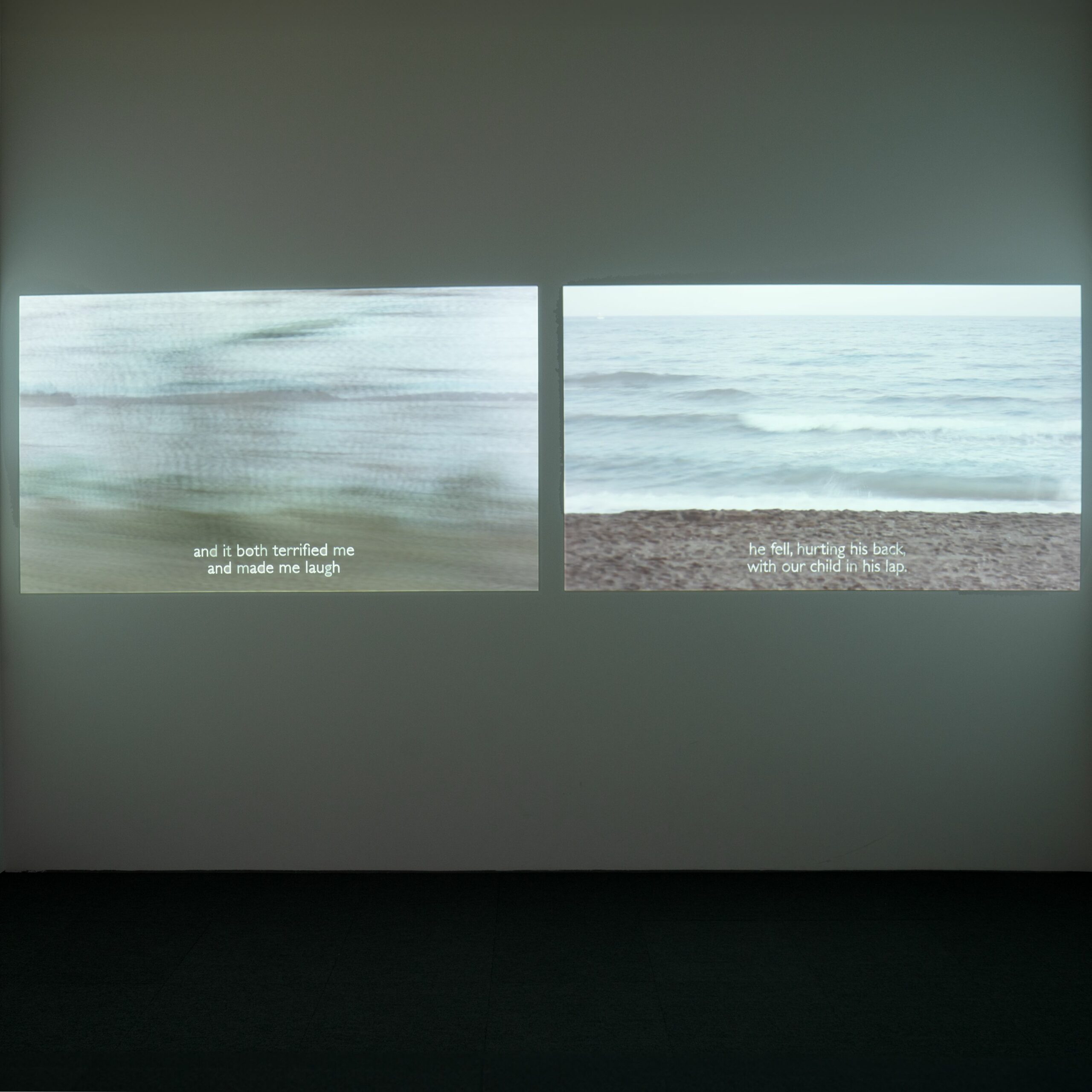
The Inland Sea (2017) compares the stories of two women and their shared fear of losing their child by drowning. In the first, a Finnish woman describes how her child nearly drowned on a beach during a holiday. In the second, a Kurdish woman recounts how she and her family fled from their home country and ended up on a perilous trip aboard a smuggler’s boat. Marja Viitahuhta (b. 1979) is a visual artist and filmmaker. Many of her works have dealt with women’s autobiographical narratives and the themes of mortality and overcoming trauma.